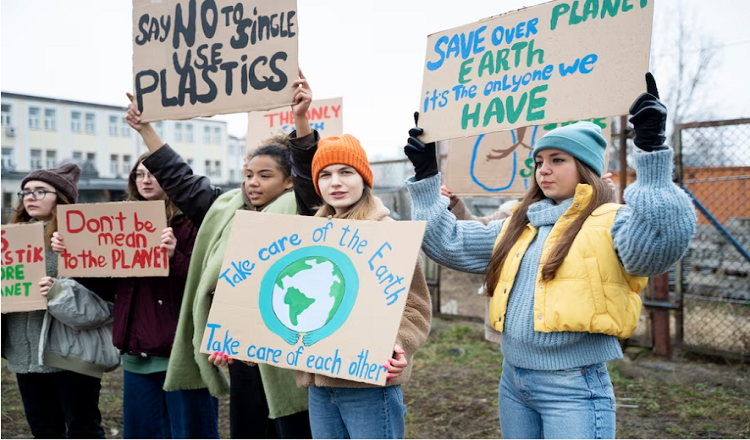The State of Climate Adaptation in the US Examining Effor
The United States is particularly affected by climate change, which is a critical issue that affects the entire planet. The repercussions of climate change are being felt across the nation, from extreme weather to rising sea levels and falling agriculture yields. As a result, policymakers, corporations, and communities are all becoming more and more interested in the topic of climate adaptation.
In this blog, we’ll look at how climate adaptation is going in the US and evaluate the initiatives being taken to foresee and mitigate the effects of climate change. We’ll examine the situation of climate adaptation in the US right now, including activities from the federal, state, and local governments as well as the corporate sector and grassroots initiatives. We may obtain insight into what is working and what difficulties need to be solved in order to successfully prepare for and respond to the impacts of climate change by analyzing the current level of climate adaptation.
Despite the seriousness of the subject, we will also use humor to lighten the mood. We think it’s crucial to discover approaches to climate adaptation that are interesting and approachable despite the fact that it can be a serious and intimidating subject. In addition to informing and educating our readers about the state of climate adaptation in the US through this blog, we also want to stress the significance of acting now to solve this pressing issue.
The US’s current level of climate adaptation
There are some encouraging initiatives in progress, but there are still big hurdles in the US when it comes to climate adaptation. Numerous federal, state, and municipal governments have put into place laws and initiatives designed to help people adapt to the effects of climate change. Successful climate adaptation strategies include things like better water management, infrastructure improvements, and neighborhood-based projects.
However, there are still many obstacles to overcome, such as a lack of finance and political will, a lack of public awareness and education, and the requirement for increased cooperation amongst many stakeholders. Despite these difficulties, politicians and communities all across the US will continue to place a high priority on efforts to adapt as a result of the urgent need to address the effects of climate change.
The involvement of the federal government in climate adaption
The federal government has a significant role to play in the US’s attempts to adapt to climate change, and it has put in place a number of programs to deal with its effects. These programs include support for research and development, collaborations with local, state, and federal governments, as well as the business sector, and efforts designed to help vulnerable communities become more resilient to the effects of climate change.
The Climate Resilience Toolkit, the Regional Coastal Resilience Grants Program of the National Oceanic and Atmospheric Administration, and the Community Development Block Grant Program of the Department of Housing and Urban Development are examples of current government climate adaptation policies and programs. There is still more work to be done to properly address the implications of climate change across the US, even while the federal government has made some headway in supporting climate adaptation programs.
efforts made by state and local governments to adapt to the climate
In the US, state and municipal governments are becoming more crucial to efforts at climate adaptation. In order to combat the effects of climate change, many states and localities have created policies and programs. Examples include building standards that mandate that new buildings be more resistant to extreme weather events and initiatives that encourage the use of renewable energy. The California Climate Adaptation Strategy, New York City’s Climate Resiliency Design Guidelines, and the Miami Forever Bond program are a few examples of effective national and municipal climate adaptation initiatives.
Effective state and local climate adaptation plans, though, face formidable obstacles to implementation, such as scarce resources, conflicting objectives, and in certain cases a lack of regulatory authority. State and municipal governments will nevertheless play a crucial role in the endeavor to adapt to the effects of climate change despite these obstacles.
Participation of the private sector in climate adaption
In the US, the private sector has a significant role to play in attempts to adapt to climate change, and numerous businesses are acting to mitigate its effects. Investments in sustainable infrastructure and supply chains, the creation of innovative technologies to lessen the effects of climate change, and collaborations with local communities to increase resilience to extreme weather events are all examples of private sector climate adaptation initiatives.
Coca-Cola’s Water Replenishment Program, the insurance industry’s initiatives to encourage building owners to invest in robust infrastructure, and Google’s investments in renewable energy are a few examples of effective private sector climate adaption measures. The need for more legal clarity, a lack of money and incentives, and a need for stronger business and community participation all pose obstacles to the private sector participating in climate adaptation activities. Despite these obstacles, the private sector will remain a crucial co-worker in the battle to mitigate the effects of climate change.
Participation of the community in climate adaption
Effective efforts at climate adaption in the US depend on community involvement. Initiatives for community-based climate adaptation entail collaborating with neighborhood groups to pinpoint climate impact vulnerabilities and increase community resilience. Creating community disaster response plans, educating locals about climate concerns, and putting green infrastructure projects into action to lower flood risk are some of these activities.
The Resilient Neighborhoods initiative in San Francisco, the Community Emergency Response Team program in Los Angeles, and the Green Infrastructure Grant program in Philadelphia are three examples of effective community-based climate adaptation methods. In order to ensure that policies and programs are tailored to the unique needs and priorities of local communities, community engagement is crucial. It also helps to foster trust and collaboration between community members, governments, and other stakeholders.
Conclusion
Effective adaptation measures are crucial to reducing risks and increasing resistance to the impacts of climate change, which is an imminent danger that has already had a considerable impact on the US. Although major efforts have been made at the federal, state, and municipal levels as well as by the private sector and communities, there is still more that needs to be done to address the scope and complexity of the situation.
Among the key conclusions are the significance of community involvement in successful climate adaption initiatives, the necessity for increased private sector investment and regulatory clarity, and the difficulties involved in putting into practice successful policies at the federal, state, and local levels.
It is obvious that the US needs to step up its climate adaption efforts immediately. To discover and put into action effective adaptation solutions, all facets of society—including the government, business world, and local communities—must collaborate cooperatively.
In summary, the US climate adaption situation is complicated and difficult, but by cooperating, we can create a more resilient future and lessen the effects of climate change. Now is the moment to take action, so let’s do it.
Read More You May Like:














Post Comment